DEXIS DEXcam 4 HD Camera Setup Guide (Mac OS)
This guide describes the installation and setup of the DEXIS DEXcam 4 HD intraoral camera for use with Dentrix Ascend Imaging.
Last updated: 10/31/2025
Overview
Dentrix Ascend Imaging supports the acquisition of intraoral images from the DEXIS DEXcam 4 HD camera on a computer running the Mac operating system. DTX Studio Bridge must be installed on each computer that the DEXIS DEXcam 4 HD camera will be plugged into.
Note: Prior to the installation of the camera, the acquisition agent application must be installed on each computer that will acquire images. Refer to Setting up the acquisition agent for instructions on downloading and installing the acquisition agent.
Minimum Versions
-
Acquisition agent v1.2.7354.26702
-
DTX Studio Bridge v1.2.2.2
Installation
To install the drivers, do the following:
-
Plug the DEXcam 4 HD camera into a USB port of the computer.
The device will be detected, and the Mac OS will use the drivers that were included with DTX Studio Bridge.
Note: DTX Studio Bridge requires Mac OS Mojave (10.14) or later.
-
In the upper-right corner of the screen, click the DTX Studio Bridge icon to open the DTX Studio Bridge window.

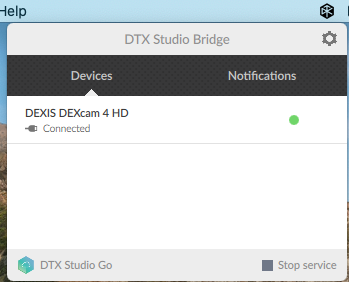
-
If the DEXcam 4 HD camera appears with a green dot and is available, it is ready for use with Dentrix Ascend Imaging; otherwise, refer to the "Troubleshooting" section.
Note: Only one camera can be connected at a time.
Testing
The DEXcam4 HD camera is now functional in Dentrix Ascend Imaging. To acquire a test image, do the following:
-
Select the 2D Oral/Facial Photo Images imaging procedure.
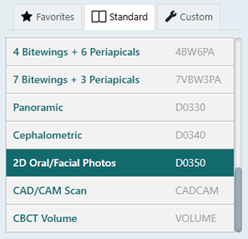
-
On the Acquisition Method for this imaging exam menu, select DEXcam 4 HD.
Note: Only one camera can be connected at a time.

-
Click Start.

A separate live video stream window opens.
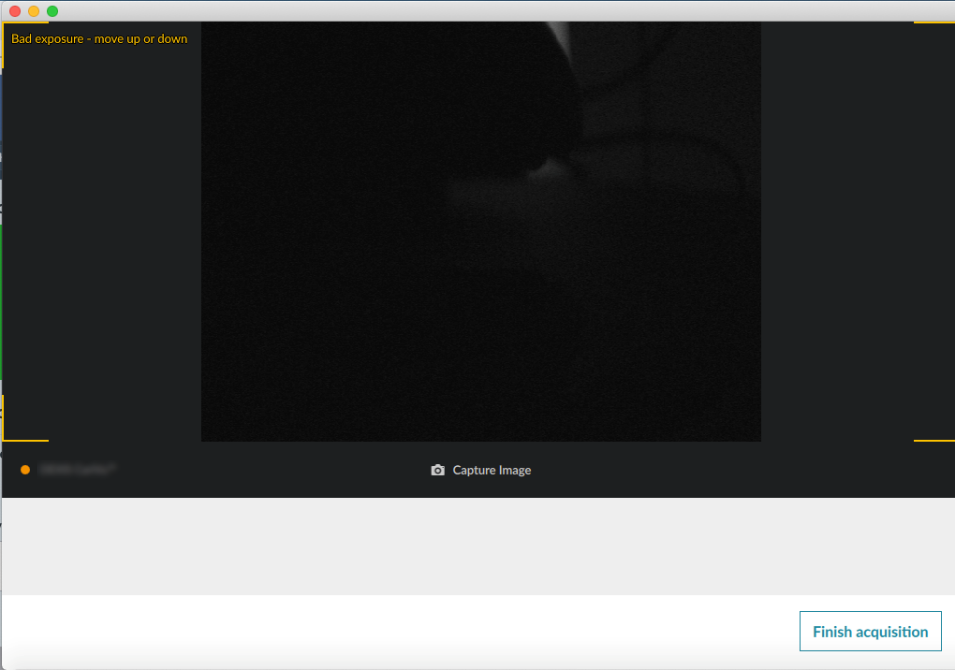
-
Press the capture button on the camera as needed to capture images.
-
When you have finished capturing images, click Finish acquisition. All the images appear on the snapshot panel in Dentrix Ascend Imaging.

-
On the snapshot panel, clear the check box of the snapshots that you do not want to save.

-
Click Assign Images.
-
Do any of the following:
-
To save one or more snapshots as intraoral images and assign tooth numbers, select the snapshots that pertain to the same teeth (deselect snapshots that do not pertain to the same teeth), and then drag them to the Select Teeth, UR/UL/LR/LL, Upper Jaw, or Lower Jaw box.

If you drag snapshots to the Select Teeth box, select the applicable teeth, and then click Assign Teeth.

-
To save one or more snapshots as extraoral images, select the snapshots that are extraoral images (deselect snapshots that are not extraoral images), and then drag them to the Extraoral Photos box.

-
To save the snapshots on the snapshot panel as intraoral images, but not assign tooth numbers, leave those snapshots on the snapshot panel.
Assigned intraoral images appear on the left side of the preview area; extraoral on the right.

Note: If you have a mix of intraoral and extraoral images, they map to one procedure (D0350), which will appear in the progress notes with two icons. Also, you can delete or reassign the intraoral or extraoral exam as needed in the future.
-
-
Click Begin Uploading.
Troubleshooting
Note: Only one camera can be connected at a time.
If this is the first time DTX Studio Bridge is being used on this computer, try restarting the computer and then trying again.
Mac OS Version
DTX Studio Bridge requires Mac OS Mojave (10.14) or later. To check your version of Mac OS, click the Apple icon on the toolbar, and then select About This Mac. If the Mac OS version is older than Mojave (10.14), the DEXcam 4 HD camera will not appear in DTX Studio Bridge.
Acquisition Agent Version
To view the version of the acquisition agent that you are using, click the Acquisition Agent icon on the dock, expand the Acquisition Agent menu, and then click Preferences. The version number appears; make sure that it meets or exceeds the minimum version number listed in the "Minimum Versions" section.
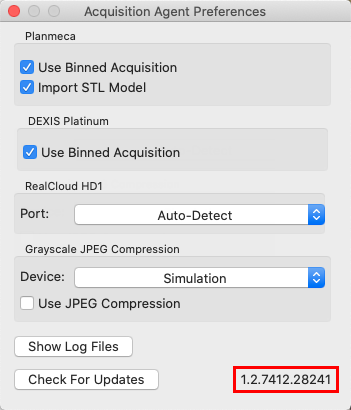
DTX Studio Bridge Version
To view the version of DTX Studio Bridge that you are using, click the DTX Studio Bridge icon on the toolbar, click the gear icon, and then select About. The version number appears; make sure that it meets or exceeds the minimum version number listed in the "Minimum Versions" section.
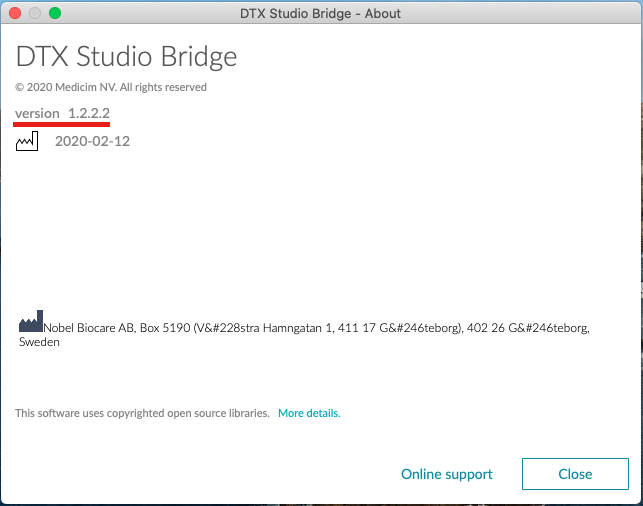
Camera Device Drivers
To confirm that the device is connected and being recognized by the Mac OS, open System Information, select Hardware > USB, and then make sure that the camera is listed.
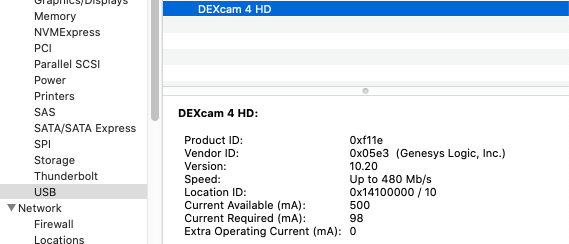
Note: The list might need to be refreshed. To do this, on the toolbar with System Information in focus, go to File > Refresh Information.